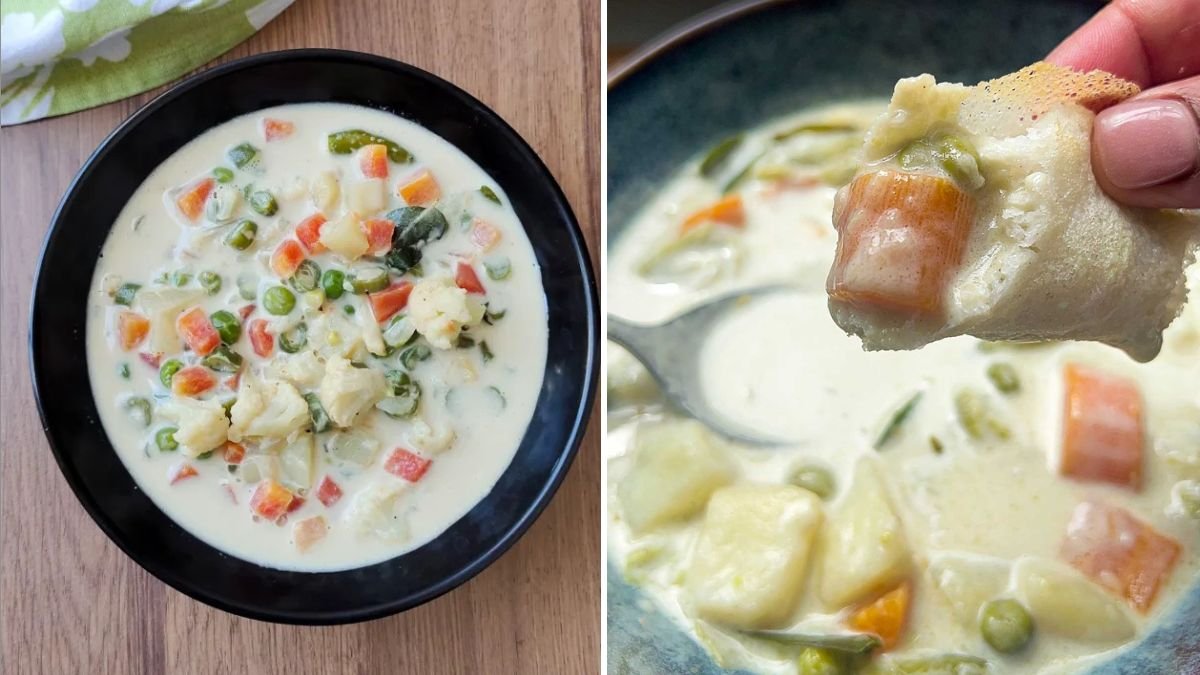When it comes to South Indian breakfast or dinner favorites, nothing beats the combination of soft, fluffy appams paired with a creamy vegetable stew. This wholesome dish is light, flavorful, and packed with fresh vegetables, making it perfect for a hearty meal any time of day. Vegetable stew is mild yet aromatic, subtly spiced with fresh herbs, ginger, and coconut milk—a combination that pairs beautifully with the slightly sweet, spongy texture of appams.
If you’ve been craving a homemade, restaurant-style vegetable stew, this 6-step guide will show you how to make a delicious, comforting stew that elevates your appam experience.
Step 1: Gather Fresh Ingredients
The secret to a flavorful stew is fresh vegetables and quality coconut milk. For this recipe, you’ll need:
Vegetables:
- Carrots (½ cup, diced)
- Beans (½ cup, chopped)
- Potatoes (½ cup, diced)
- Cauliflower (½ cup, small florets)
- Green peas (¼ cup)
Aromatics and Flavorings:
- 1 medium onion, thinly sliced
- 1–2 green chilies, slit
- 1-inch ginger, julienned
- 2–3 garlic cloves, minced
- 1 tsp black pepper (whole or crushed)
- 1–2 cinnamon sticks
- 2–3 cloves
- 1–2 cardamom pods
- 1 cup coconut milk (fresh or canned)
- Salt to taste
- 1–2 tbsp vegetable oil or coconut oil
Garnish:
- Fresh coriander leaves
- Optional fried cashews for extra richness
Pro Tip: Cutting vegetables into uniform sizes ensures even cooking and a visually appealing dish.
Step 2: Prepare the Vegetables
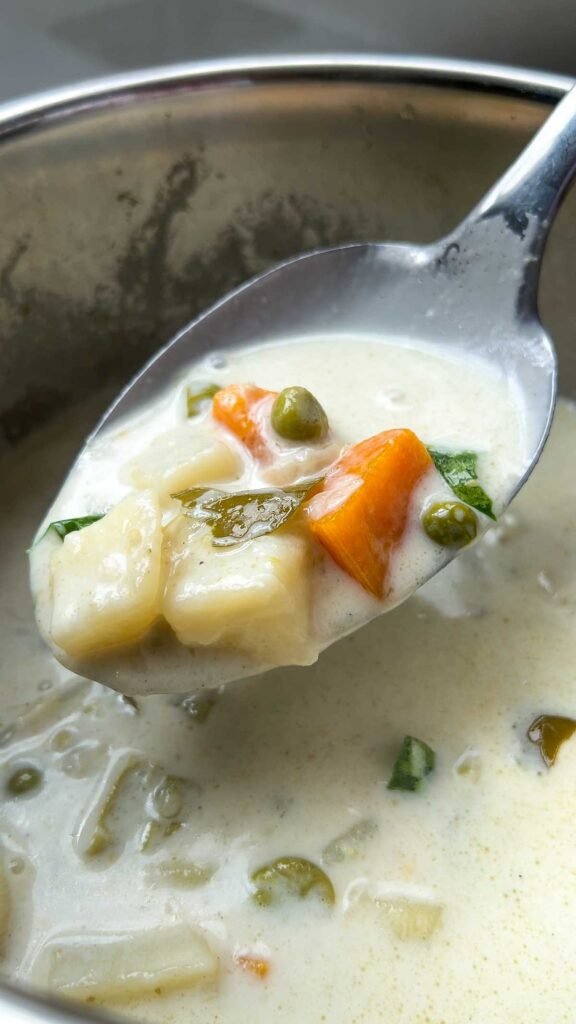
Proper preparation makes cooking easier and ensures a stew with perfectly tender vegetables:
- Wash and chop all vegetables uniformly.
- Keep harder vegetables like carrots and potatoes in slightly smaller pieces to cook evenly with softer vegetables like beans and cauliflower.
- Set aside your aromatics—onions, garlic, ginger, and green chilies—for sautéing.
Pro Tip: Prepping all ingredients before cooking helps the process go smoothly, especially when using high heat for sautéing.
Step 3: Sauté Aromatics for Flavor
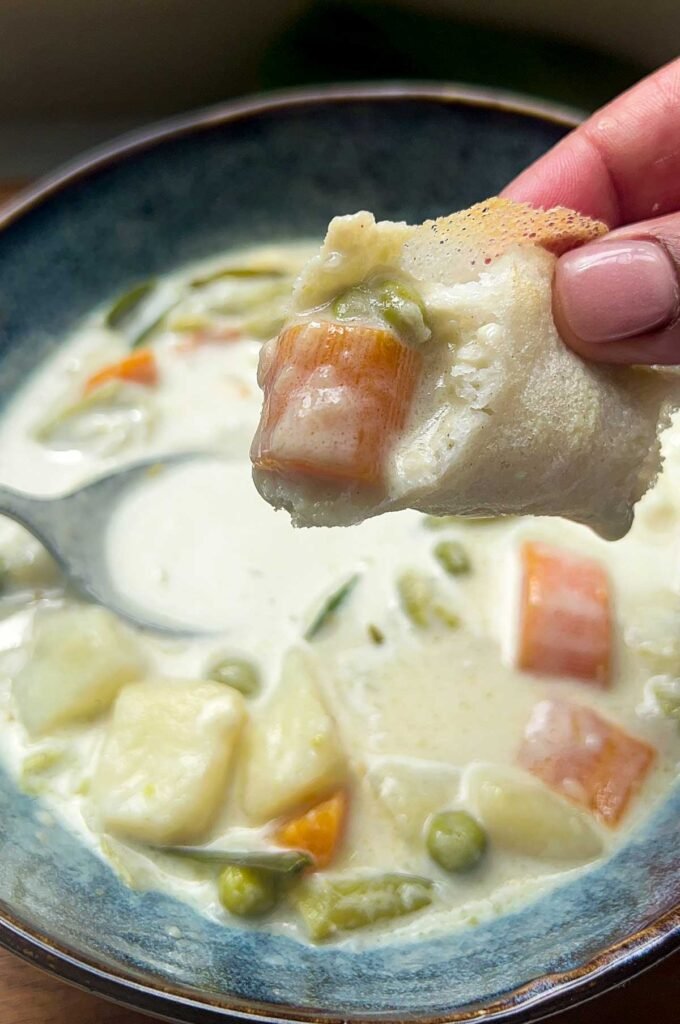
The base of any great vegetable stew is a fragrant sauté of aromatics:
- Heat 1–2 tbsp of oil in a wide pan or kadai over medium heat.
- Add whole spices—cinnamon, cloves, cardamom—and sauté until fragrant.
- Add sliced onions, garlic, ginger, and green chilies. Sauté until the onions turn soft and translucent.
Pro Tip: Sautéing aromatics slowly releases their flavors, giving your stew a deep, aromatic base.
Step 4: Cook the Vegetables
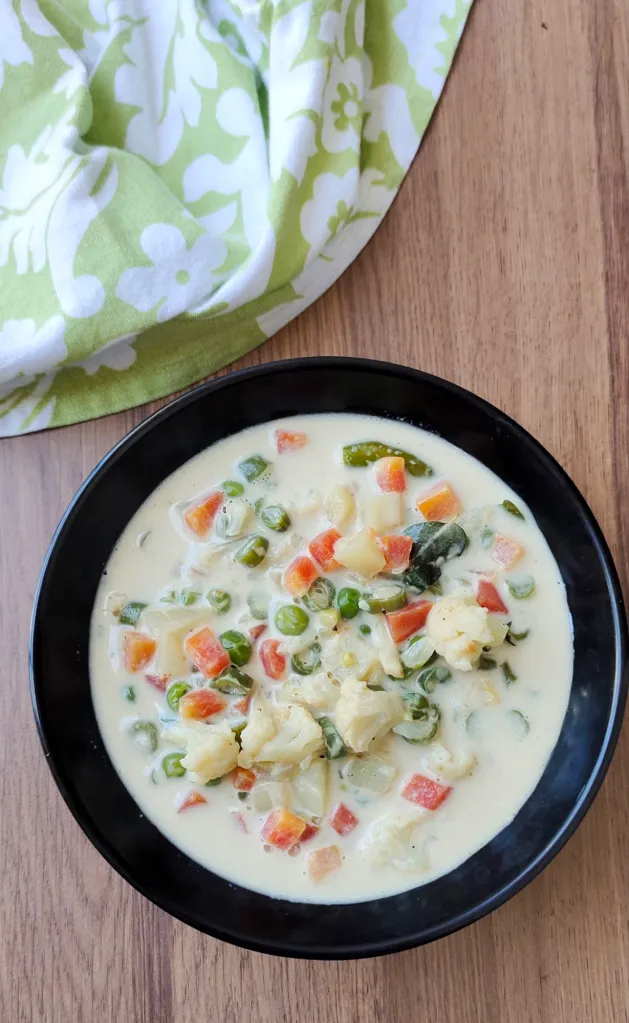
Now it’s time to add the vegetables and simmer:
- Add chopped carrots, beans, and potatoes to the pan. Stir to coat with the aromatics.
- Add cauliflower florets and green peas.
- Pour in 1–2 cups of water and season with salt.
- Cover and cook for 8–10 minutes, until vegetables are tender but not mushy.
Pro Tip: Keep vegetables slightly firm—they will finish cooking when coconut milk is added, and this preserves texture and color.
Step 5: Add Coconut Milk and Simmer
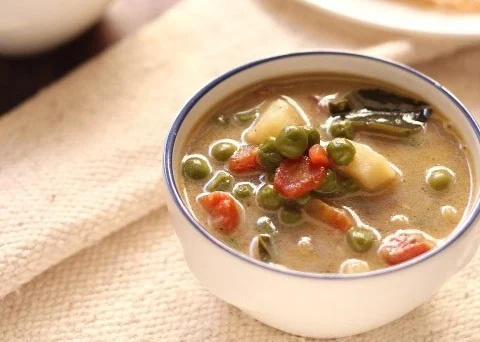
The creamy coconut milk is what gives vegetable stew its signature richness:
- Lower the heat and slowly pour in 1 cup of coconut milk.
- Stir gently to combine without breaking the vegetables.
- Simmer for 5–7 minutes, allowing the flavors to meld.
- Adjust seasoning with salt and black pepper.
Pro Tip: Avoid boiling coconut milk vigorously—it can separate. Gentle simmering ensures a silky, rich consistency.
Step 6: Garnish and Serve with Appam
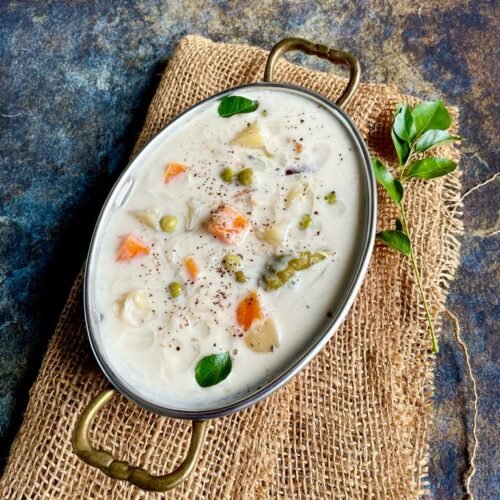
Finishing touches elevate your stew into a restaurant-quality dish:
- Sprinkle freshly chopped coriander leaves on top.
- Optionally, add fried cashews for a crunchy texture.
- Serve hot with freshly steamed appams, which soak up the stew beautifully.
Pro Tip: A drizzle of coconut milk before serving adds visual appeal and enhances creaminess.
Tips for Perfect Vegetable Stew
- Use Fresh Coconut Milk: Fresh coconut milk gives the richest flavor. If using canned, choose full-fat coconut milk.
- Uniform Vegetable Size: Helps cook vegetables evenly and maintain texture.
- Adjust Consistency: Add water for a thinner stew, or reduce slightly for a thicker, creamier consistency.
- Flavor Layering: Sautéing spices first, then vegetables, and finally simmering in coconut milk ensures well-rounded flavors.
- Pair Wisely: Vegetable stew is versatile—perfect with appams, idiyappams, or even plain rice.
Health Benefits of Vegetable Stew
Vegetable stew is not only delicious but also packed with nutrients:
- High in Fiber: Helps digestion and keeps you full longer.
- Rich in Vitamins and Minerals: From carrots, beans, cauliflower, and peas.
- Low in Fat: Especially when made with minimal oil or coconut oil.
- Good for Heart Health: Coconut milk contains healthy fats, and vegetables provide antioxidants.
- Easily Digestible: Makes it perfect for all ages, including kids and seniors.
Serving Suggestions
- Pair with soft, fluffy appams for a traditional South Indian breakfast or dinner.
- Serve alongside coconut chutney or pickles for added flavor.
- Can be enjoyed as a light lunch with steamed rice or quinoa for a modern twist.
Pro Tip: For a richer flavor, add a few curry leaves during the sauté step, which enhances aroma and taste.
Why Vegetable Stew for Appam is a Crowd Favorite
- Quick and Easy: Ready in under 30 minutes, perfect for busy mornings or dinner.
- Flavorful Yet Mild: Gentle spices appeal to a wide audience.
- Nutritious: Packed with fresh vegetables and protein from peas.
- Customizable: Add potatoes, carrots, beans, or even tofu for variation.
- Comfort Food: Warm, aromatic, and soothing—ideal for any meal.
This dish perfectly embodies comfort, health, and flavor, making it a go-to choice for both everyday meals and festive occasions.
Final Thoughts: Make Vegetable Stew for Appam in 6 Easy Steps
With this 6-step guide, making restaurant-style Vegetable Stew at home is simple, quick, and rewarding. From preparing fresh vegetables to sautéing aromatic spices and finishing with creamy coconut milk, this recipe delivers rich flavor, vibrant color, and comforting texture that perfectly complements appams.
Whether you’re serving it for family breakfast, brunch, or dinner, this stew is sure to impress. Enjoy a healthy, flavorful, and visually appealing dish that brings a taste of South India right to your kitchen table.
